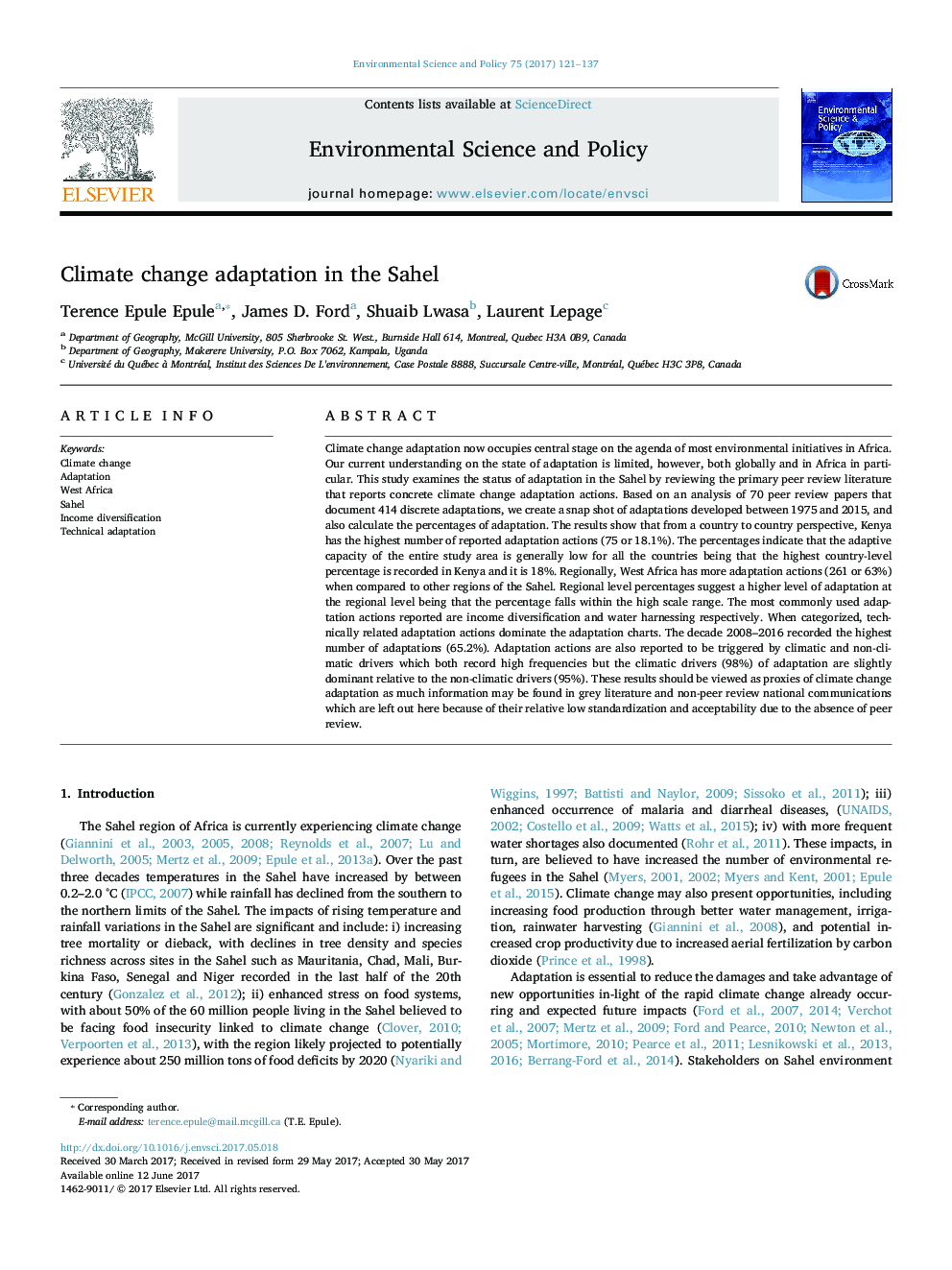| کد مقاله | کد نشریه | سال انتشار | مقاله انگلیسی | نسخه تمام متن |
|---|---|---|---|---|
| 5115800 | 1485033 | 2017 | 17 صفحه PDF | دانلود رایگان |
- A systematic tracking approach is used to verify the spatial pattern of adaptation actions across the Sahel.
- Regionally, West African Sahel and country wise Kenya record the highest number of reported adaptation actions.
- Diversification of livelihoods and technically based actions are the most commonly reported adaptations.
- Adaptation is mostly in response to climatic drivers and.
- There is an increase in the attribution of response to non-climatic drivers.
Climate change adaptation now occupies central stage on the agenda of most environmental initiatives in Africa. Our current understanding on the state of adaptation is limited, however, both globally and in Africa in particular. This study examines the status of adaptation in the Sahel by reviewing the primary peer review literature that reports concrete climate change adaptation actions. Based on an analysis of 70 peer review papers that document 414 discrete adaptations, we create a snap shot of adaptations developed between 1975 and 2015, and also calculate the percentages of adaptation. The results show that from a country to country perspective, Kenya has the highest number of reported adaptation actions (75 or 18.1%). The percentages indicate that the adaptive capacity of the entire study area is generally low for all the countries being that the highest country-level percentage is recorded in Kenya and it is 18%. Regionally, West Africa has more adaptation actions (261 or 63%) when compared to other regions of the Sahel. Regional level percentages suggest a higher level of adaptation at the regional level being that the percentage falls within the high scale range. The most commonly used adaptation actions reported are income diversification and water harnessing respectively. When categorized, technically related adaptation actions dominate the adaptation charts. The decade 2008-2016 recorded the highest number of adaptations (65.2%). Adaptation actions are also reported to be triggered by climatic and non-climatic drivers which both record high frequencies but the climatic drivers (98%) of adaptation are slightly dominant relative to the non-climatic drivers (95%). These results should be viewed as proxies of climate change adaptation as much information may be found in grey literature and non-peer review national communications which are left out here because of their relative low standardization and acceptability due to the absence of peer review.
Journal: Environmental Science & Policy - Volume 75, September 2017, Pages 121-137
